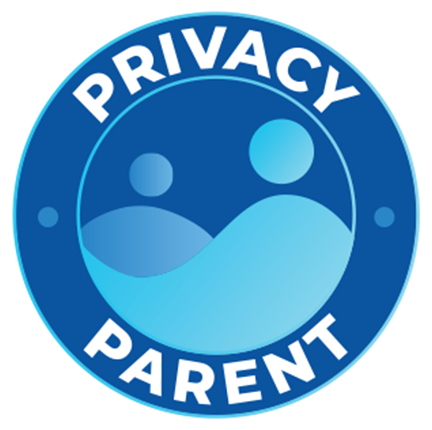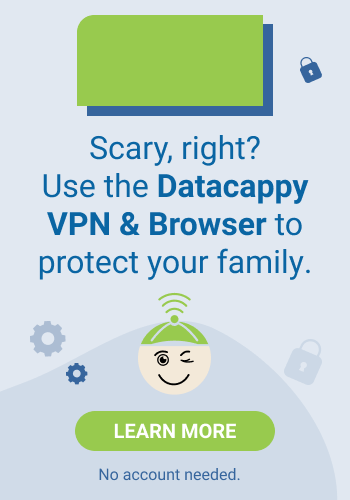Glossary of Digital Terms
Ad Blocking
Ad blocking is a type of software for desktop computers, laptop computers, tablets and smartphones that can remove advertising content from a website or mobile app.
Address bar/ URL Bar
The address bar or URL bar is a blank space at the top of your browser that allows you to type in a website address. In many cases, address bars double as a search engine option as well.
App (Application)/Mobile App
An app or mobile app is a type of software program that can run on the internet, a computer or mobile device (termed a mobile app) most often downloaded from the Apple Store (iOs) or the Play Store (Google).
Blog
BLOG (or BLOGGING) is short for Weblog. Bloggers post daily or weekly sharing their thoughts to their websites. To keep their readers engaged, bloggers often encourage viewers to subscribe to their blog and then send them updates via email. A blog is typically designed to highlight the personal highlights, commentary and opinion of a specific individual(s) around such topics as interviews, tutorials/how-tos/DIY, product reviews, family, news, cooking, sports, etc. Bloggers sometimes get asked to become brand ambassadors for products, so their content is sponsored. Typically, bloggers will disclose when this is the case. Blogging has segued into vlogging, which is a video version of the above.
Bluetooth
Bluetooth® technology allows a device (such as headset or a watch) to use low-power radio waves instead of wires or cables to connect to a phone or computer. The range is roughly 30 feet (10m).
Browser
A browser is a software program that allows you to search for and retrieve information created for display on the World Wide Web. Examples of browsers are Google Chrome, Safari, Datacappy, Internet Explorer (IE) and Firefox.
Coaxial Cable
A coaxial cable is the primary type of cabling used by the cable television industry and is also widely used for computer networks, such as Ethernet. It is much less susceptible to interference and can carry much more data.
Cookie
A cookie is a little bit of data placed by a website on a user’s computer while the user is browsing. Cookies remember information such as items you have placed in a shopping cart, names and addresses, passwords and credit card numbers. Cookies are often used to gather information on a user’s browsing history.
DNS (Domain Name Servers)
Domain Name Servers (DNS) are essentially the Internet’s phone book. They are directories of all the domain names which are translated to Internet Protocol (IP) addresses and housed at the Central Registry.
When you type in a web address, e.g., www.tomshats.com, your Internet Service Provider sees the DNS associated with the domain name, translates it into a machine friendly IP address (for example 216.168.224.70 ) and directs your Internet connection to the correct website.
Domain Name
A domain name does not contain actual information but points to the place where the IP address information resides. The IP address is the actual code and the domain name is the nickname for that code. Every domain name has a top level domain such as .com, .net., .edu, .gov. or .org.
DSL (Digital Subscriber Line)
DSL is a way for home users and small businesses to have high-speed access to the Internet over standard copper lines.
Encryption
Encryption is the act of translating data into secret code to establish a layer of security before it is sent over the internet.
Ethernet
The ethernet is the most commonly used LAN (Local Area Network) which provides a fast, efficient, and direct connection to a router via an ethernet cable. ( Wi-Fi is used for wireless connection).
Firewall
A firewall is a security device (software or hardware) that acts as a filter between a secure area (i.e. your computer) and a less secure area (i.e. the internet) based upon a set of rules defined by the user. When a firewall is running, users are warned when a site they visit seems suspicious.
Gateway
A gateway is a networked device which serves as an entry point into another network. For example, a wireless router is commonly the gateway in a home network.
Hacker
A hacker is an expert at breaking into (or “hacking”) networks and computer systems often times leaving malicious software or “bugs”.
Hotspot
A WiFi hotspot is a location that enables you to connect to a network or the Internet with wireless adapters. Some mobile phone carriers offer a device called a Mobile Hotspot, which allow you to connect non-phone devices to the data network of the mobile phone carrier.
HTTP
HTTP (Hypertext Transfer Protocol) is the software used for — the “language” of — transmitting websites from the server across the internet to your computer .
HTTPS
HTTPS (Hypertext Transfer Protocol Secure) is the software used for communicating data on the World Wide Web but with a layer of encryption for added security.
Hubs
Network Hubs’ is the most common term and is a connection point for network devices which connect LAN (local area network) segments and may also have multiple ports (such as printers,storage devices, workstations and servers).
Hyperlink
A hyperlink is usually a highlighted word (known technically as a hypertext file) on a website that links to either another place on the same website or to another website. Also known simply as a link.
Internet (The Web)
The Internet is a massive, global computer network which connects smaller computer networks to communicate content from websites. Many people describe the internet as a “network of networks”. The web is generally synonymous with the internet: numerous computers that are NOT connected in a straight line but rather connected in multiple directions similar to a spider’s web.
IP Address
The IP address (Internet Protocol Address) is a unique number assigned to your computers, tablets and smartphones which essentially acts as a return address when communicating with other devices.
ISP (Internet Service Provider)
An ISP (Internet Service Provider) is the common industry term for a company that is able to provide you with access to the Internet. Users cannot connect to the Internet without first setting up an account with an internet service provider.
Keyword
A keyword is a word(s) entered into a search engine which then returns web page results based upon that specific word(s). Example: Typing in “large breed dogs” will return a list of web sites relating to large breed dogs.
LAN (Local Area Network)
The term LAN (Local Area Network) refers to a computer network connected by cables or wirelessly (WiFi) that extends over short distances such as a single room, building or group of buildings.
Mobile Device
A mobile device is a small, handheld computer which has an operating system able to run mobile apps, take pictures, send/retrieve email and connect to the internet via your cell phone carrier and/or Wi-Fi (wireless local area networking).
Modem
A modem is a device that communicates with your Internet service provider’s network. It connects by cable, telephone, satellite, or fiber and gives you a standard Ethernet cable that you plug into any router (or a single computer) to get an Internet connection.
Network
A network is a group of two or more computer systems linked together. Examples of computer networks are local-area networks (LANs, i.e. in the same building), wide-area networks (WANs, i.e. computers are farther apart and are connected by telephone lines or radio waves) or campus-area networks (CANs, i.e. computers are within a limited geographic area, such as a campus or military base). For more, read “Who Knows My IP Address?”
Operating System
The operating system is the software that comes installed on a computer that manages the overall operation of your computer and gives you a general interface in which to perform tasks. It is often referred to as the OS. Examples are Windows 10 (Microsoft) or OS X (Apple) or iOS (iPhone).
Ping
A ping is a query or call to another computer on a network to determine whether there is a connection to it.
Port
On a device, a port is a hole or connection found on the front or back of a computer which allows computers to access an external device such as a printer. On the Internet, a software or network port is a location where information is sent. Port 80 is the standard http network port. If you want to block ports on your network, you can use a software or hardware firewall.
Private Server
A private server is a computer or virtual computer that is privately administrated with its own email system.
Proxy or Proxy Server
A proxy or proxy server acts as the “middleman” or hub that adds in a layer of protection to make you anonymous. Any requests you perform on the internet will appear as if they are coming from the proxy server address rather than from your computer’s address. For more, read “Who Knows My IP Address?”
Refresh
A “refresh” (F5 on a Windows computer) is the act or function of updating the current display on a screen.
Router
A router is a device that shares your internet connection among multiple devices in your home or office. Wireless routers are most commonly used which host a Wi-Fi network for multiple devices. A router connects to a modem however most ISP’s (internet service providers) provide a modem/router which is a modem and router in a single box.
Search Engine
A search engine is a website specifically designed to search documents on the World Wide Web for a particular word and then present these findings in a list format for you. Examples are Google, Bing, Yahoo, Baidu, Ask.com, Duck Duck Go. For more, read “What Your Online Searches Reveal and Give Away.”
Social Media
Social media platforms are online channels of communication that allow you to interact, collaborate and share content (Facebook, Instragram, Twitter, Snapchat, LinkedIn, Wikipedia, Reddit, Pinterest, etc.).
Spam
Spam is electronic junk mail advertising for anything from business schemes to pharmaceutical drugs, weight loss programs, online degrees, job opportunities and online gambling. Email filters can be established to put these emails into a separate folder so you do not have to see them.
SSL
SSL (Secure Sockets Layer) is the standard security technology for creating an encrypted link between a web server and a browser.
Third (3rd) Party Host
Third (3rd) party hosts are companies contracted by websites to perform additional services such as providing ads, extra content and search bar functionality (such as an autofill functionality in a search bar). A third party host can intercept and access user data that is exchanged between the user and the website. For more, read “Third Party Hosting: Not Your Kind of Party.”
Trolling
Trolling is the act of deliberately posting inappropriate or upsetting comments to public forums (chat rooms, blogs or articles) in order to provoke responses.
URL
The URL (Uniform Resource Locator) is the address of a website located on the internet. Standard format: http://www.datacappy.com
USB
The term USB (Universal Serial Bus) refers to a connection point for a cable on a desktop, laptop, tablet (and some smartphones) that allows a device to communicate with other devices such as a keyboard or a mouse or flash drive.
Vlog
VOIP
VOIP (Voice Over Internet Protocol) allows you to make voice calls over the internet instead of a regular phone line.
VPN
VPN (Virtual Private Network) refers to a private network connection to the internet. People using a virtual private network connect with a unique ID and password and their internet traffic is encrypted. Since all their data is encrypted, they remain anonymous on the internet and to prevent theft or collection of personal data and website history. For more, read “What Is a VPN and Why Do I Need One?”
Whitelist
Generally, a whitelist is the people allowed in somewhere, like a guest list. On the web, it is who you approve to access your personal data. You can create this list of “hosts” within Blindcut. It is your personal list of ads, third party hosts and cookies that YOU have approved (it’s the reverse of a blacklist) and therefore allow on websites that you visit.
WiFi
WiFi (Wireless Fidelity) uses one of the IEEE 802.11 wireless standards to achieve a wireless connection to a network. A home wireless network uses a wireless access point or router to broadcast a signal using WAP or WEP encryption to send and receive signals from wireless devices on the network. For more, read “Staying Safe with Public WiFi.”
WLAN
The term WLAN (Wireless Local Area Network) refers to a type of local area network (LAN) that provides wireless network communication over short distances using radio or infrared signals rather than traditional network cabling. WLANs most commonly use Wi-Fi or Bluetooth as the wireless network protocol allowing multiple devices such as mobile phones, laptops, tablets, Internet audio systems and game consoles.




